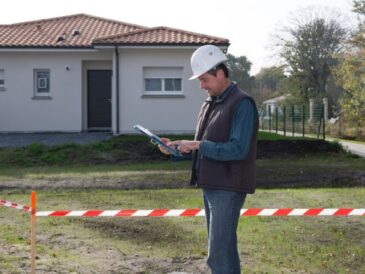Landscape design is as much about the science of the land as it is about artistic expression. One of the fundamental tools that landscape architects use to create exceptional outdoor spaces is the contour survey plan. Understanding what it is and how it is applied will provide insight into its substantial value in the design process.
Understanding the Basics of a Contour Survey Plan
Before diving into the practical applications, it’s essential to grasp the fundamentals of contour survey plans. These plans are integral to understanding the unique geographical features of a specific area, making them indispensable in the toolkit of any landscape designer.
What is a contour survey plan?
A contour survey plan is a detailed representation of the Earth’s surface, depicted through contour lines that connect points of equal elevation. This graphical depiction provides vital information regarding the slope and elevation changes of the terrain.
In simpler terms, if you imagine tracing the outline of hills and valleys on a map, you are essentially visualising what a contour survey plan accomplishes. By offering a three-dimensional perspective of the land on a two-dimensional plane, it sets the foundation for targeted design interventions.
Key components of a contour survey plan
Several critical elements make up a contour survey plan. Primarily, you’ll encounter contour lines, which represent different elevations. These lines’ proximity can indicate steepness; the closer they are, the steeper the slope.
Other important components include spot heights, which give specific elevation points, and a legend that helps interpret symbols and notations used in the plan. Together, these features help landscape designers make informed decisions about how to alter or enhance a landscape in harmony with its natural contours.
The Role of Contour Survey Plans in Landscape Design
Understanding the role of contour survey plans is crucial for anyone involved in landscape architecture. Their significance cannot be overstated, as they provide the framework around which effective designs are built.
The importance of accurate land measurements
Accurate land measurements are the cornerstone of successful landscape design. Without a correct understanding of a site’s topography, designers may overlook critical factors that could affect both the aesthetic and functionality of the space.
Contour survey plans offer these measurements with precision, allowing designers to visualise the elevation and slope changes in an area. This comprehensive knowledge enables professionals to avoid potential issues, such as water drainage problems or erosion, which could lead to significant pitfalls in the execution of a landscape project.
How contour survey plans inform design decisions
Every decision a landscape designer makes can be positively influenced by the insights provided by a contour survey plan. For instance, knowing where the land naturally slopes allows designers to create spaces for seating, plant arrangements, and even pathways that feel intuitive and integrated.
Furthermore, these plans help designers optimise the use of natural resources. They can plan for strategic plant placements based on sunlight exposure and irrigation needs, thus creating a harmonious ecosystem that thrives under the right conditions.

The Benefits of Using a Contour Survey Plan in Landscape Design
Contour survey plans bring numerous advantages to the table, especially in enhancing the overall quality and sustainability of landscape designs.
Enhancing the aesthetic appeal of your landscape
One of the most noticeable benefits of employing a contour survey plan is the ability to drastically improve the aesthetic appeal of any outdoor area. With a clear understanding of the land’s natural contours, designers can craft visually stunning landscapes that blend seamlessly into their environment.
By harmonising with the natural topography, designers can create features like terraced gardens, flowing pathways, and elevated seating areas that invite exploration and enjoyment, ultimately enhancing the visual experience of the landscape.
Ensuring the sustainability of your design
In today’s world, sustainability is paramount in design. By using contour survey plans, landscape designers can focus on creating sustainable solutions that respect the natural environment.
For example, knowing the slopes and drainage patterns allows designers to incorporate water-saving techniques, such as rain gardens or bioswales, which not only manage stormwater effectively but also promote biodiversity and support native plant species.
The Process of Creating a Contour Survey Plan
Creating a contour survey plan involves a series of steps that ensure the information gathered is comprehensive and actionable. It’s essential for designers to know how these plans are developed to appreciate their significance fully.
Gathering the necessary tools and equipment
The first step in conducting a contour survey is gathering the appropriate tools and equipment. Typically, a total station or a laser level will be used alongside measuring tapes and GPS devices for accuracy.
Equipped with these tools, surveyors can measure angles and distances accurately, ensuring the data collected is reliable and can be used to create a precise contour survey plan.
Steps in conducting a contour survey
Once the needed tools are assembled, the survey process itself can commence. It begins by making a series of measurements across the land, noting elevation changes at regular intervals. These measurements will ultimately determine the positioning of the contour lines on the final plan.
After collecting the data, it is essential to process and plot these findings onto a graphical representation. This stage often involves using specialised software that assists designers in visualising the land’s contours clearly.
Interpreting a Contour Survey Plan
Once a contour survey plan has been created, it’s crucial to interpret it correctly to make effective design decisions. Understanding how to read contour plans is a vital skill for landscape architects. Want to understanding cadastral surveying and Its role in land ownership visit https://hambuildingsupplies.com/understanding-cadastral-surveying-and-its-role-in-land-ownership/
Reading contour lines and understanding their significance
Contour lines tell a story about the land. By understanding how to read them, designers can quickly grasp the terrain’s features, such as elevation, slope, and potential water flow.
Furthermore, variations in contour line spacing indicate changes in slope steepness; lines close together suggest a steeper hill, while those spaced further apart indicate a gentler slope. This interpretation allows for strategic planning in how to handle the landscape during the design process.

Applying contour survey findings to landscape design
Finally, applying the findings of a contour survey plan directly impacts the design’s success. Armed with accurate topographical information, designers can create landscapes that are not only visually appealing but also practical and sustainable.
By harmonising with the natural lay of the land, designers can ensure that their work enhances the environment while fulfilling the client’s vision, resulting in a sustainable and stunning landscape that stands the test of time.


